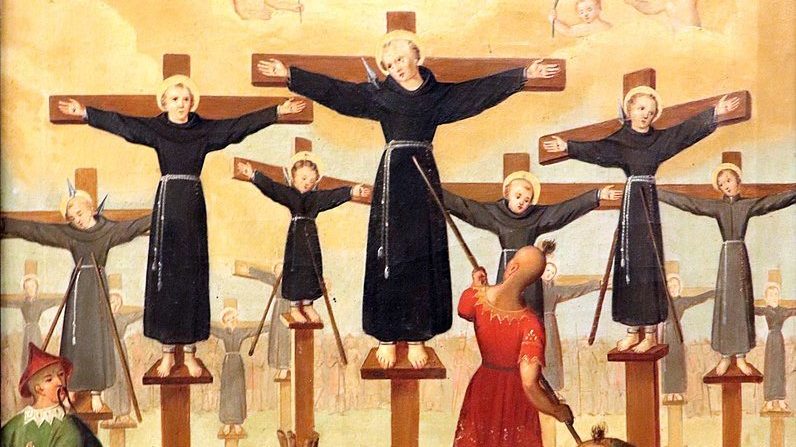What is a monastery? How do monasteries work? St. Benedict (A.D. 480-547), who is considered the founder of Western monasticism, offered this counsel as an essential rule for his monks: “Stay in your cell and it will teach all you need to know.” Properly understood, this is a rich metaphor, not a literal counsel. When he is telling a monk to stay in his cell and let it teach him what he needs to know, he is not referring to a literal monk’s cell in a monastery. He is referring to the state of life in which a monk or anyone else finds himself or herself.
Sometimes this has been expressed in Christian spirituality as being faithful to your duties of state. The idea here being that if you are faithful in love and in good heart to the situation in life in which you find yourself, life itself will bring you to maturity and virtue.
For example, a mother who gives herself over in selflessness and fidelity to raising her children will be brought to maturity and altruism through that process. Her home will be her monk’s cell and she will be metaphorically the abbess of the monastery (with some very young monks) and staying inside that monastery, her home, will teach her all she needs to know. She will be raising children, but they will also be raising her. Motherhood will teach her what she needs to know and will turn her into a wise elder, a biblical and archetypal Sophia.
The process of aging is a natural monastery. If we live long enough, eventually the aging process turns everyone into a monk. Monks take four vows: poverty, chastity, obedience, and perseverance. The process of aging which moves us (seemingly without mercy) toward marginalization, dependence on others, and into a living situation from which there will be no escape, in a manner of speaking, imposes those four vows on us.
But, as St. Benedict counsels, this can teach us all we need to know, and has a unique power to mature us in a very deep way. Monks have secrets worth knowing. So does the aging process.
This can be particularly instructive vis-à-vis how we can make our final days and our death a more radical gift to others. In the first centuries of Christianity, martyrdom was seen as the ideal way for a Christian to end his or her days here on earth. It was seen as a radical way of imitating Christ and giving your death away as a gift.
Of course, this had to be rethought after Christianity became the state religion and emperors no longer martyred Christians. What followed then were various attempts at doing this, metaphorically martyrdom. One fairly popular way of doing it was that, after raising their children and reaching retirement, a couple would leave each other, and each would go off to a separate monastery and live out the rest of his or her life as a monk or a nun.
Classical Christian mystics speak about how in the last phase of our lives we should enter something they call the dark night of the spirit, namely, that we proactively make a radical decision grounded in faith to move into a situation in life where we can no longer take care of ourselves but must trust, in raw faith, that God will provide for us. This parallels Hindu spirituality which suggests that in the last, fully mature stage of life we should become a sannyasin, a holy old beggar.
I suspect that most of us will never proactively cut off all our former securities and, on purpose, place ourselves in a situation within which we are helpless to provide for and take care of ourselves. But this is where nature steps in. The aging process will do it for us. It will turn us into a sannyasin and put us into the dark night of the spirit.
How? As we age and our health declines and we find ourselves more marginalized in terms of having a vital place within society, we will progressively lose our capacity to take care of ourselves. Eventually, if we live long enough, for many of us it will mean moving into an assisted facility, which is in effect a natural monastery.
This metaphor is also apropos for what it means to (by conscription) enter the dark night of the spirit and what it means to be a holy old beggar, a sannyasin. In essence it means this: When someone is in an assisted living facility, irrespective of whether he or she is a millionaire or a pauper, the rules are the same for everyone. Since you can no longer take care of yourself (and indeed you don’t have to) you live a monastic life of obedience and dependence.
In assisted living, you live by the monastic bell and you die as a holy old beggar.

